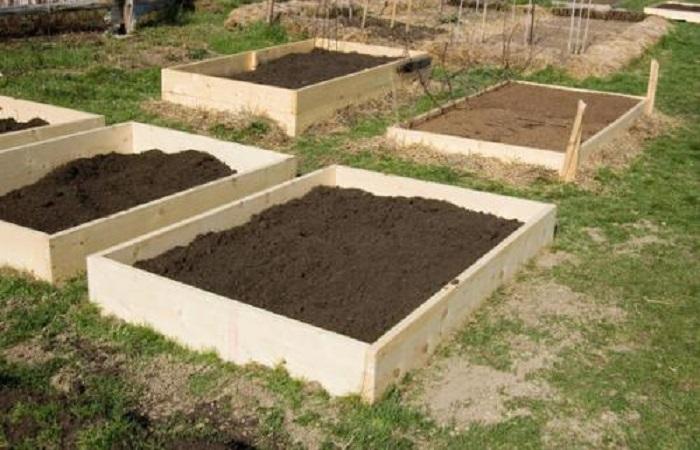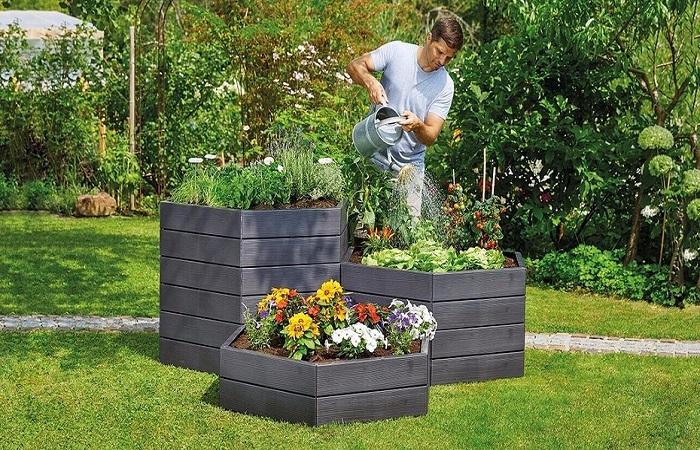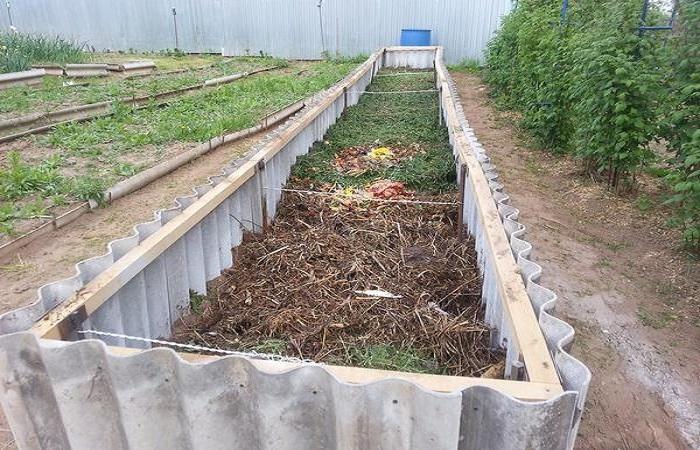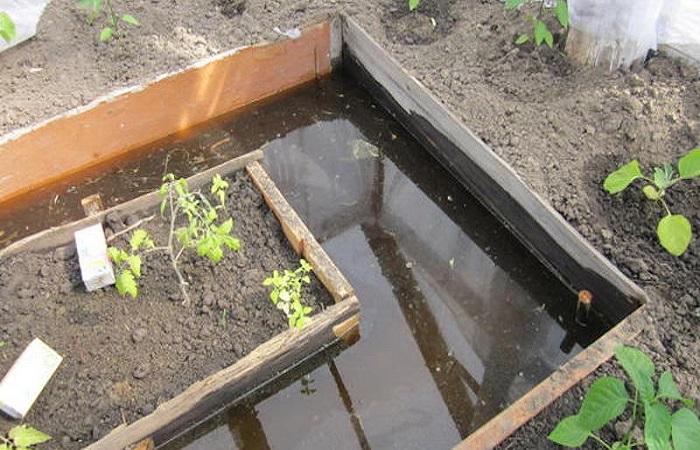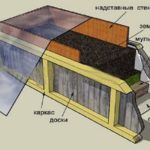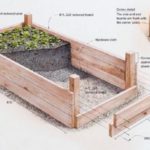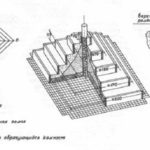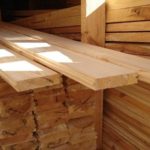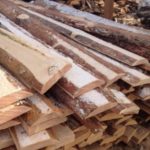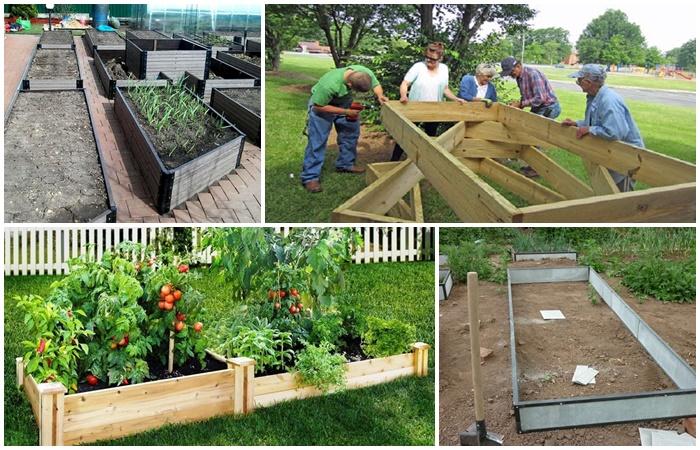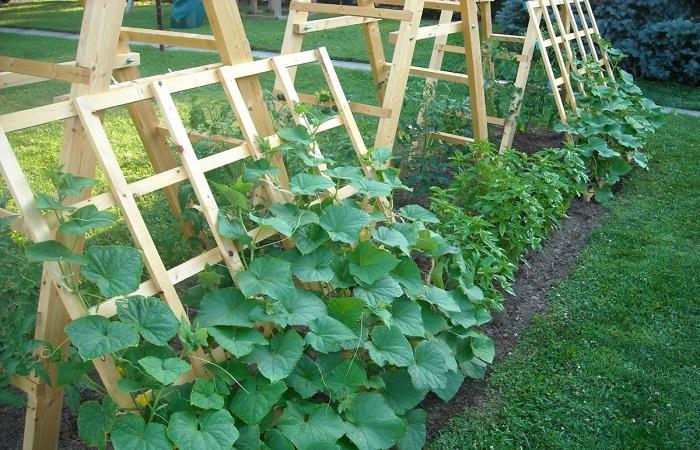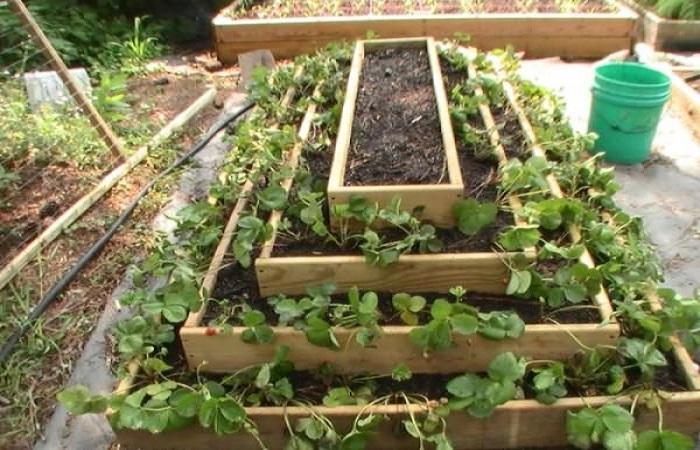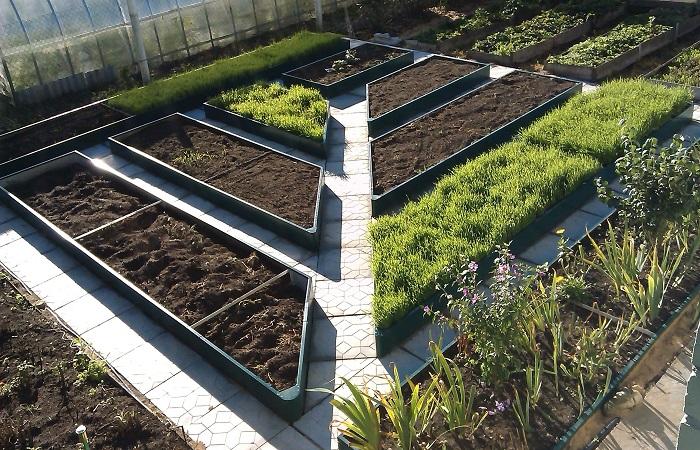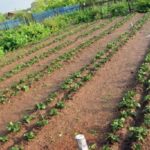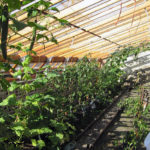Ordinary beds do not require time and effort to arrange a fence, but in many ways they are inferior to fenced ones. Making a fence is not so difficult; suitable materials can be found in any yard; construction does not require any special knowledge. Let's look at how you can fence garden beds cheaply, what tools and materials you will need, how to make and install fencing, and mistakes that should not be made.
Types of beds
The most common are several types of beds, which are usually found on garden plots and summer cottages. These are simple fences of different heights, the so-called “warm” and drained beds.
Box-shaped bed
The simplest type, the fence is made of boards of small height, which are installed around the perimeter of the bed. It has the advantages of low cost, easy installation, and environmental friendliness. They provide easy care for plants: weeds do not penetrate inside, climbing plants do not go beyond the ridges, water does not spread, and the earth does not erode. It is convenient to install arcs and secure the film if you need to make a greenhouse or protect plants from frost. Box-shaped beds look aesthetically pleasing and neat, and are easy to maintain order in and around them.
Beds with high sides
They build on a rise of compost, on top of which fertile soil is poured. They are mainly used for growing zucchini, pumpkins, cucumbers and potatoes, but you can plant any other vegetables in them, for example, root vegetables. For climbing plants, install a vertical lattice; you can also create temporary greenhouses if you equip the sides with arcs. In the second and subsequent seasons it will be necessary to add soil, as it compacts and settles.
Raised beds are built on poor or rocky soil; a mound of earth compensates for their shortcomings. Plants on such beds are easy to care for; you don’t have to bend down to the ground, which will appeal to older people.
"Warm" beds
Heat is created due to the reheating of fresh manure, which is placed at the very bottom of the structure. Manure is poured in the fall so that it settles and partially ferments over the winter. After the snow melts and the manure warms up, it is covered with soil.The temperature created by organic matter in “warm” beds is higher than in ordinary ones; the process continues continuously until it is completely processed. Early vegetables and herbs, heat-loving plants are planted in them. High beds with heated compost will reliably protect plant roots from sudden frosts.
In the fall, manure processed into humus is selected and laid out around the garden, and a new portion is added to the beds. This method of growing is relevant in northern regions, where it is important for plants to receive as much heat as possible.
Beds with drainage
They are installed in clay soil or in areas where water stagnates. They are made according to this scheme: take out the soil on the site 50 cm deep, add 20 cm of sand, sawdust on top, a layer of humus, and soil last. In addition to the fact that the beds will be raised, they will drain better, water will go down, and air will flow to the roots. Suitable for growing potatoes, root crops, vegetables and herbs.
Dimensions and drawings
You can choose any shape and size at your discretion, but the design should not be too long and wide so that you can easily reach any corner. The optimal dimensions are as follows: width - 0.9-1.2 m, height - 0.15-0.5 m. The length is arbitrary, but if the length is large, additional supports will need to be installed to support the fence.
The height of warm beds with compost is recommended to be at least 50 cm, for potatoes and root vegetables - at least 40 cm, for radishes, onions and lettuce - 20 cm is enough.
Locations
Like regular beds, fenced beds are placed in the garden, where vegetables are usually grown in a summer cottage. How many there will be and in what composition they will be located depends on the wishes of the owner. The main thing is that it is convenient to approach and process them, and that they are located near a water source. It is also necessary to take into account how the plants being planted relate to light. If they are not shade-tolerant, structures should be located in an open area. You also need to make sure that they are placed where there is no wind.
Another advantage of fenced beds is that they can be built even on a barren plot or on a concrete site, if the sides are high enough. Thus, it will be possible to solve the issue of expanding the territory in which plants can be grown and decorate the site, because it is permissible to plant not only vegetables, but also flowers and fragrant herbs in the beds.
Required tools and materials
You can build a bed from available materials: boards, timber, slabs, clapboards, pieces of corrugated or flat slate, polycarbonate or plastic. Wooden material must be treated with an antiseptic to increase its service life. Impregnation will protect the wood from rotting.
The size of the material should be such that at least half of its height is in the ground, the rest will be the height of the beds. You can use bricks, natural stones, limestone, curbs, or make concrete walls. Pegs will be needed to secure the structure.
You need to purchase non-woven material with which to line the bottom of the site, straw, sawdust, humus, and turf soil.From the tools you need to take nails or screws, a hammer or screwdriver, a hacksaw, a tape measure, a shovel.
DIY making
You can start making it in the spring, when the soil is dry enough to dig up. First you need to mark where the future structure will be located, install pegs and stretch a rope between them. Then you need to prepare the material: cut the pieces to length. You can immediately, even before installing it in the ground, connect them into a common structure; if it is not very large, it can be moved. Such beds can be removed for the winter under cover, which makes them reusable.
According to the markings, dig trenches, install sides in them at half the height so that they can withstand the pressure of the soil poured into them. Check with a level how level they are horizontally. Fasten at the corners, provide supports if necessary. Place non-woven material on the bottom to act as drainage. If there are mice or moles in the area, then you need to put a metal mesh with small cells on the bottom. Fill in layers of sand, sawdust, compost and turf soil. The top layer should almost reach the top of the sides so that the soil does not spill out during processing.
During the season, the soil will settle, this is a natural process, so from time to time you should add soil to the previous level.
Further arrangement
To grow tall or climbing vegetable or ornamental plants, you can install a trellis next to the beds. A tasteful trellis can enhance a simple structure design. The simplest trellis can be constructed from slats onto which a plastic mesh is secured.
How to avoid mistakes
Common mistakes when making beds: they are made too long or wide, which makes it difficult to work with the plants. The plants themselves, especially those in the middle, do not have enough light and air, and they grow worse.
Perennials, strawberries, and all plants that remain for the winter cannot be planted in multi-tiered beds. Due to the lack of soil covering the roots, they freeze out.
Examples of beautiful beds
Modern ideas in designing beds make them not just functional, cheap and convenient, but also beautiful. Various options for structures will decorate the site if you make them in the shape of a pyramid, star, or cascade.
Pyramid beds are neat, convenient, save space, and improve illumination for plants. At each level of the original multi-level structures, you can place a new type of crop or flower. In an unusual star-shaped bed, you can plant a small decorative tree in the center, and flowers or greenery in the segments.
Cascading wooden structures, like pyramidal ones, have good characteristics and create better conditions for growing plants than on conventional beds. Light-loving plants are located on the top rows, shade-tolerant plants are located below.
Fenced garden beds are an excellent solution if you want your plot to generate income in the form of a harvest of self-grown plants, but also to look aesthetically pleasing. You can place them in the garden and even in the yard near the house.Their advantages are obvious: they are easy to build and care for, and you can use improvised materials for construction that have long been waiting for use. They make it easier to care for plants and create optimal conditions for growth.

